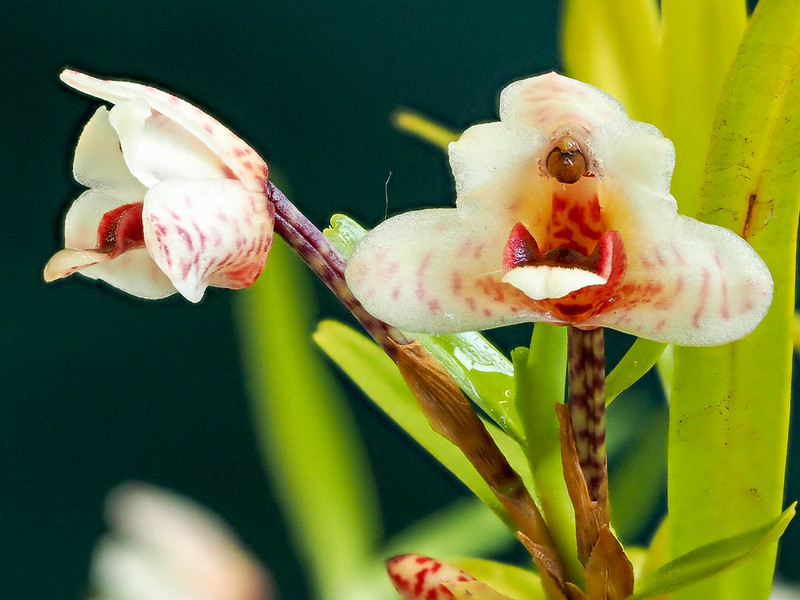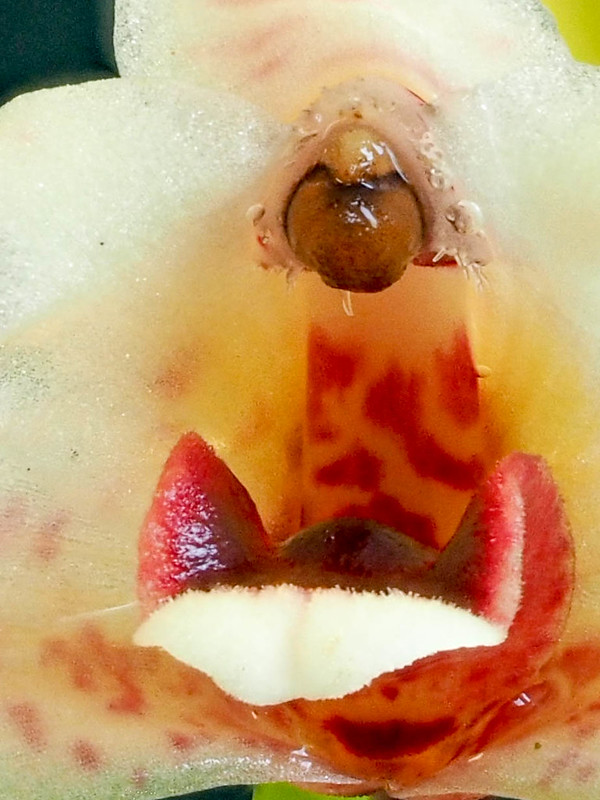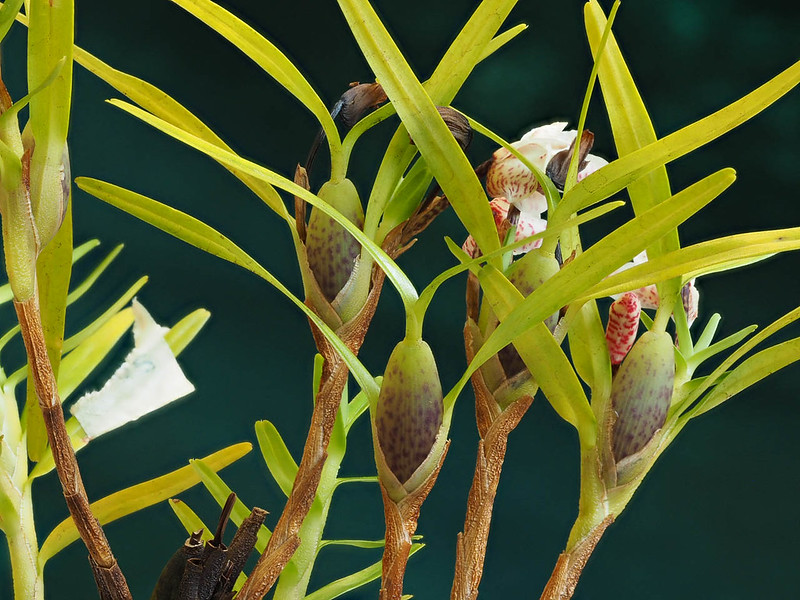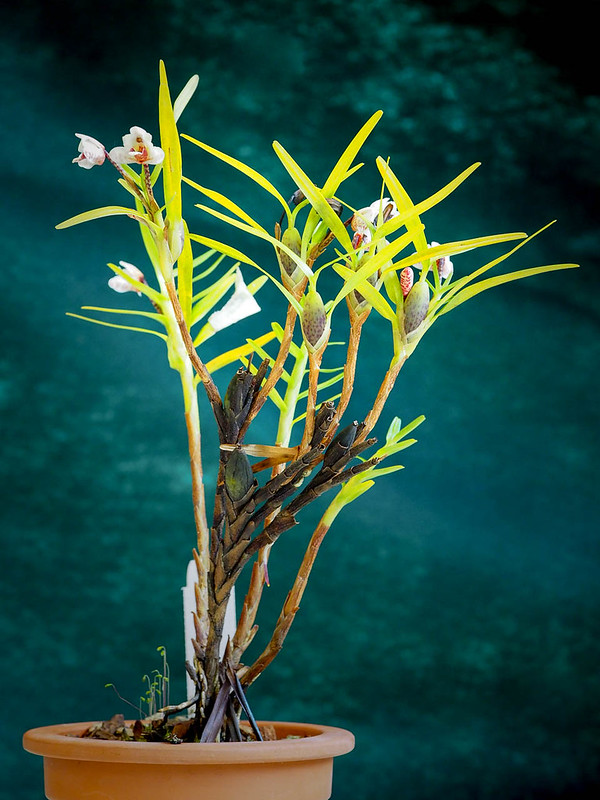
According to IOSPE page (link), this species is from Ecuador on a volcano at elevations of 1500 to 2000m. It was originally described as Maxillaria volcanica. I got this from Mundiflora in October 2015. It quickly established and started to grow immediately, and it has been flowering for 3 months or so, and the number of flowers are gradually increasing. I couldn't find any information about the culture of this species, so I contacted Marni Turkel. She has been always helpful and kindly got information about this species from her friend, Dan Newman of Hanging Gardens, who has seen the natural habitat of this species, and has been growing it for more than 15 years. Dan gave me a detailed description. Thank you, Dan! His winter minimum temp is around 13C (55F), and mentioned that it seems to be ok with higher or lower temperature. Indeed, I'm growing at lower temperature; the temperature stays constant at 20C (68F) during the day and at 10C (50F) during the night in the same condition as Madevallia racemosa (details of the environment is in this post). Dan mentioned that he saw Pleurothallis penelops growing near M. volcanica, so I'm sure that I'm growing at well below the optimum temperature. I'll keep close eyes on this plant, and I'll probably move it to a higher temperature. Currently it is in sphagnum moss: small bark = 1:1 in a terra cotta pot, but I probably decrease the amount of sphagnum moss once it becomes a bit bigger.



I love the alien nature of that plant. Looks completely different from any orchid I have seen. Very very cool. Looks very well grown Naoki!
ReplyDeleteThank you. I didn't have much info about this species, but it seems to be a pretty easy gower so far, and flowers frequently.
Delete